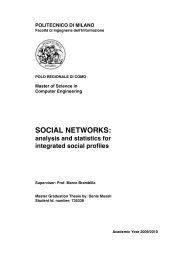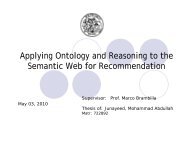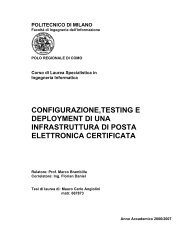Thesis full text (PDF) - Politecnico di Milano
Thesis full text (PDF) - Politecnico di Milano
Thesis full text (PDF) - Politecnico di Milano
Create successful ePaper yourself
Turn your PDF publications into a flip-book with our unique Google optimized e-Paper software.
elements that correspond to UML attributes of datatypes. The rest of the UML properties<br />
are defined with property restrictions added apart allowing for the same property to have<br />
multiple domains and ranges.<br />
• Generalizations: They organize classes and associations hierarchically with ad<strong>di</strong>tional<br />
restrictions of <strong>di</strong>sjointness and completeness. The subClassOf and subPropertyOf<br />
constructs in DAML+OIL and OWL have similar meaning.<br />
• Instances: Instances appear in class <strong>di</strong>agrams as values for enumeration types and static<br />
attributes. Similar is the use of hasValue and oneOf in OWL for in<strong>di</strong>viduals.<br />
2.9 Reasoning Capabilities for UML Models<br />
2.9.1 Representation Formalisms<br />
Although the formalization of UML class <strong>di</strong>agrams has been already addressed in First Order<br />
Logic [40] [41] [42], theorem proves do not guarantee complete automatic reasoning because of<br />
the FOL undecidability.<br />
DL languages have been widely used to formalize UML components [43], because their<br />
computational complexity and decidability are well stu<strong>di</strong>ed. Interpretations have been given with<br />
DLRifd [44], ALCQI [45], and sROIQ [46]. We adopt sROIQ because it overcomes the<br />
limitations of ALCQI by supporting nominal’s, role inclusion axioms and transitivity, and<br />
inference systems are highly optimized.<br />
2.9.2 Reasoning Engines<br />
For reasoning upon the description logic languages used to formalize UML class and object<br />
<strong>di</strong>agrams, three widely used tableau-based provers: Pellet, Fact++, and RacerPro. All of them<br />
provide sound and complete reasoning based upon the tableau method. The features they<br />
support, and evaluate:<br />
• their expressivity in terms of the inferences they provide upon Tboxes and Aboxes,<br />
• the advanced features they support for ontologies development,<br />
• their access mechanisms for clients.<br />
24


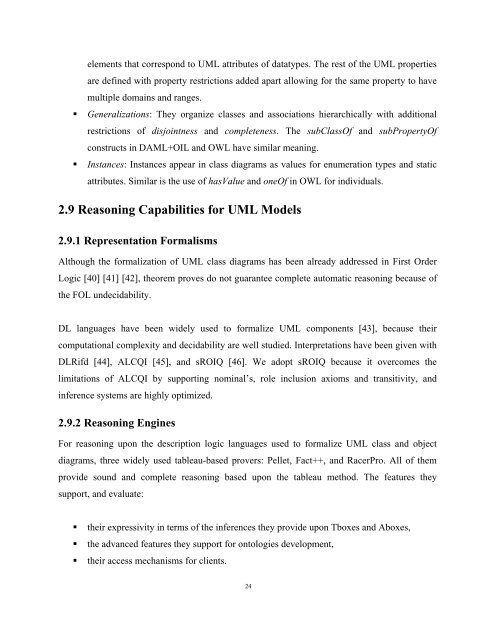
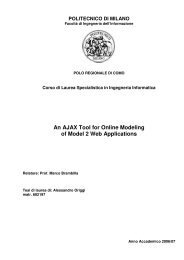
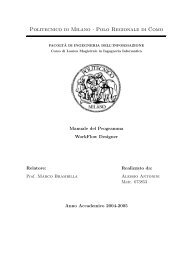
![Full text preview of the chapter [PDF] - Politecnico di Milano](https://img.yumpu.com/44021924/1/180x260/full-text-preview-of-the-chapter-pdf-politecnico-di-milano.jpg?quality=85)
